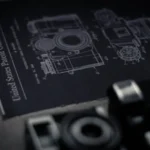In the realm of patents, the concept of inherent anticipation holds significant importance. It is crucial to understand what this term entails and how it affects the overall patentability of an invention. In this article, we will delve into the intricacies of inherent anticipation, explore the patent process, discuss the role of the Manual of Patent Examining Procedure (MPEP), and provide valuable insights on navigating the Patent Bar.
Understanding the Concept of Inherent Anticipation
Inherent anticipation, in simple terms, refers to the situation where an invention is not patentable because it inherently lacks novelty. In other words, it means that the invention is already known or published before the filing of the patent application. This can be a challenging concept to grasp, as it involves a thorough analysis of prior art and existing knowledge in the field.
Let’s delve deeper into the definition and importance of inherent anticipation in the context of patent law.
Definition and Importance of Inherent Anticipation
Inherent anticipation is a legal doctrine that plays a pivotal role in patent law. It is defined as the situation when all the elements or characteristics of an invention are disclosed or described in a single prior art reference. Essentially, if an invention’s features can be found in a previous publication, the invention lacks novelty and may not be eligible for patent protection.
The importance of understanding inherent anticipation lies in ensuring that inventors and patent applicants are aware of the potential obstacles they may encounter during the patent application process. By comprehending this concept, one can navigate the patent landscape more effectively and maximize the chances of obtaining a valuable patent.
Now that we have a better understanding of inherent anticipation, let’s explore how it affects patentability.
How Inherent Anticipation Affects Patentability
When considering patentability, the presence of inherent anticipation can significantly impact the outcome of a patent application. Patent examiners carefully scrutinize prior art references to assess whether the invention is truly novel and non-obvious. If they determine that all elements of the invention can be found in a single prior art reference, they may reject the application based on inherent anticipation.
This underscores the importance of conducting thorough searches to identify any existing publications or prior art that may potentially render an invention unpatentable. By proactively identifying and addressing potential inherent anticipation issues, inventors and patent applicants can strengthen their patent applications and increase the chances of successfully obtaining a patent.
In conclusion, inherent anticipation is a critical concept in patent law that revolves around the novelty of an invention. By understanding this concept and conducting diligent research, inventors and patent applicants can navigate the patent landscape more effectively and enhance their chances of securing valuable patent protection.
A Deep Dive into the Patent Process
The patent process is a complex and multifaceted journey that inventors embark upon to secure legal protection for their inventions. It involves several steps, each of which plays a crucial role in navigating the intricacies of the patent system.
Steps in the Patent Application Process
1. Invention Disclosure: The first step in the patent process is to document the invention in a detailed and comprehensive manner. This includes describing the invention’s features, functionality, and potential applications.
2. Prior Art Search: Conducting a thorough search to identify existing publications and prior art relevant to the invention is essential. This helps in assessing the novelty and non-obviousness of the invention.
3. Drafting the Patent Application: Once the prior art search is complete, a patent attorney or agent can assist in drafting a well-crafted patent application. This document should include a detailed description of the invention, claims that define the scope of protection sought, and any supporting drawings or diagrams.
4. Filing the Application: The prepared patent application is then filed with the appropriate patent office, along with any necessary filing fees and supporting documentation.
5. Patent Examination: After filing, the application undergoes a thorough examination by the patent office. A patent examiner evaluates the application, assesses the patentability of the invention, and may issue office actions with objections or rejections.
6. Responding to Office Actions: In response to any objections or rejections, the inventor or their attorney can provide arguments, amendments, or clarifications to address the examiner’s concerns.
7. Grant or Denial of the Patent: If the patent office determines that the invention meets the legal requirements for patentability, a patent is granted. Otherwise, if the objections or rejections cannot be overcome, the application may ultimately be denied.
Common Challenges in Securing a Patent
The patent process is not without its fair share of challenges. Securing a patent can be a complex task that requires careful attention to detail and a comprehensive understanding of patent law.
Some common challenges faced by inventors include:
- Overcoming Obviousness: One of the key requirements for obtaining a patent is demonstrating that the invention is non-obvious. This can be particularly challenging when there are existing technologies or prior art references that may make the invention seem obvious to a skilled person in the field.
- Subject Matter Eligibility: In some cases, inventions may be deemed ineligible for patent protection due to being classified as abstract ideas, laws of nature, or natural phenomena. These subject matter eligibility challenges can prevent inventors from obtaining the desired patent protection.
- Patent Examination Delays: The process of patent examination can be time-consuming, with significant delays in some cases. These delays can prolong the overall timeline for securing a patent and potentially impact the commercialization or protection of the invention.
- Costs and Fees: Securing a patent involves various costs and fees, including application fees, attorney fees, and maintenance fees. These expenses can add up quickly, especially for inventors or small businesses operating on a limited budget.
The Role of the Manual of Patent Examining Procedure (MPEP)
The Manual of Patent Examining Procedure (MPEP) serves as a vital resource for both patent examiners and patent applicants. It provides guidance and clarification on the patent examination process, ensuring consistency and accuracy in the examination of patent applications.
An Overview of the MPEP
The MPEP is a comprehensive manual published by the United States Patent and Trademark Office (USPTO). It contains detailed information on patent laws, regulations, and procedures that patent examiners follow during the examination process.
It serves as a reference guide for patent examiners, providing them with a framework for evaluating the patentability of inventions. Additionally, it also serves as a valuable resource for patent applicants, offering insights into the requirements, procedures, and expectations of the patent office.
How the MPEP Guides Patent Examiners and Applicants
The MPEP plays a crucial role in ensuring uniformity and consistency in patent examinations. Its guidelines help patent examiners evaluate the patentability of inventions, including issues related to novelty, non-obviousness, and enablement. By adhering to the MPEP’s guidance, examiners can maintain a standardized approach in assessing applications and making determinations.
For patent applicants, the MPEP provides a roadmap for understanding the patent examination process and the criteria used by examiners. It offers insights into the requirements for patentability, helping applicants in structuring their applications and arguments effectively. Familiarity with the MPEP can enhance the chances of submitting a strong application that meets the patent office’s standards.
Navigating the Patent Bar
The Patent Bar is an examination that individuals must pass to become registered patent practitioners before the USPTO. The exam evaluates an individual’s knowledge of patent law, rules, and procedures.
Requirements for Taking the Patent Bar
To be eligible to take the Patent Bar exam, an individual must possess certain qualifications:
- Scientific or Technical Degree: To become a registered patent practitioner, one must hold a degree in a scientific or technical field recognized by the USPTO.
- Good Moral Character: Applicants must demonstrate good moral character and reputation.
- US Citizenship or Residency: US citizenship is not a requirement, but individuals must be a resident of the United States in order to be eligible for the Patent Bar.
Tips for Passing the Patent Bar Exam
Passing the Patent Bar exam requires a combination of comprehensive knowledge, strategic preparation, and diligent study. Here are some tips to help individuals increase their chances of success:
- Thoroughly Review the Examination Content Outline: The USPTO provides an examination content outline that outlines the topics covered in the exam. Familiarize yourself with this outline to understand the areas of focus during your preparation.
- Utilize Study Materials: Make use of study materials specifically designed to help individuals prepare for the Patent Bar exam. These materials include textbooks, online courses, and practice exams.
- Join Study Groups or Work with a Tutor: Collaborating with others through study groups or working with a tutor can provide valuable insights and increase your understanding of the material.
- Practice Under Timed Conditions: To simulate the exam environment, practice solving questions under timed conditions. This will help you manage your time effectively during the actual exam.
- Take Advantage of Exam Prep Courses: Consider enrolling in exam prep courses that provide comprehensive coverage of the exam topics and offer guidance on exam-taking strategies.
Case Studies on Inherent Anticipation
To further understand the intricacies of inherent anticipation, it is helpful to explore some notable patent cases that have dealt with this concept. These case studies provide valuable insights and lessons learned for inventors and practitioners alike.
Notable Patent Cases Involving Inherent Anticipation
1. Case Study 1: In this case, a patent for a new pharmaceutical compound was rejected due to inherent anticipation. The court found that all the unique characteristics of the compound were already disclosed in a previous publication, rendering the invention lacking novelty.
2. Case Study 2: This case involved a patent application for a groundbreaking technological advancement. However, the application was denied as the invention’s core features were found to be inherently anticipated by an earlier patent. The court emphasized the importance of conducting a thorough prior art search to identify any existing art that may invalidate the patentability of an invention.
Lessons Learned from These Cases
These case studies underline the significance of conducting comprehensive searches and assessing prior art during the patent application process. Inventors must be diligent in their efforts to identify any prior publications or existing inventions that could potentially render their invention unpatentable.
Lessons learned from these cases include:
- Thorough Prior Art Searches: Invest adequate time and resources in conducting thorough prior art searches to identify any potential challenges to the novelty or non-obviousness of your invention.
- Careful Examination of Existing Patents: Pay close attention to the claims and descriptions of existing patents, as they may inadvertently disclose essential elements of your invention.
- Consultation with Patent Professionals: Seek the guidance of experienced patent attorneys or agents to navigate the complexities of patent law and to ensure the strongest possible patent protection for your invention.
In conclusion, inherent anticipation is a crucial concept when it comes to patentability. Understanding its definition, importance, and implications can greatly benefit inventors and patent applicants. By taking a deep dive into the patent process, exploring the role of the MPEP, and learning how to navigate the Patent Bar, individuals can enhance their chances of securing valuable patents. Furthermore, by studying case studies on inherent anticipation, one can gain valuable insights and avoid potential pitfalls during the patent application process.






